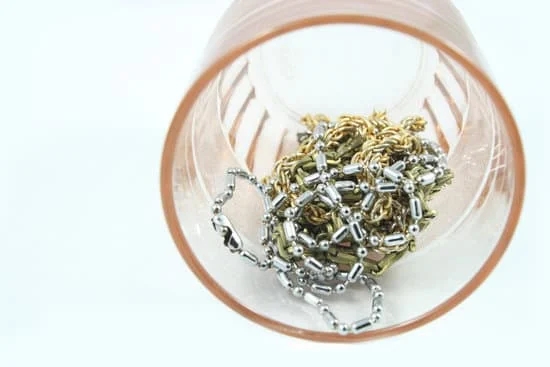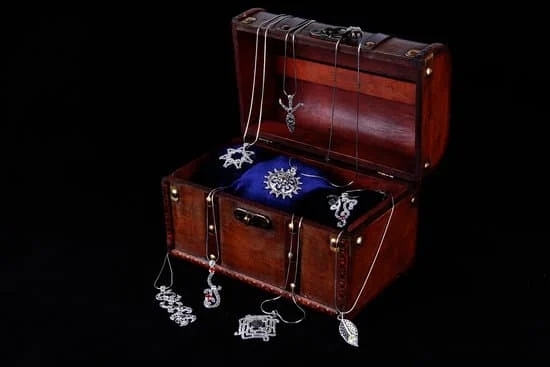Thai handmade jewelry holds a significant place in the rich cultural heritage of Thailand. The art of crafting jewelry in this Southeast Asian country dates back centuries and continues to be an integral part of Thai culture. Handmade jewelry in Thailand is a reflection of the country’s traditions, craftsmanship, and unique design aesthetic, making it highly sought after around the world.
Throughout its history, Thai jewelry making has been influenced by various cultures and civilizations, resulting in a diverse range of techniques and styles. These traditional methods are deeply rooted in Thai society and play a crucial role in preserving the country’s artistic heritage. Each piece of handmade jewelry carries with it a story that is shaped by the artisan’s skill and creativity.
From intricate silverwork to vibrant gemstone settings, Thai handmade jewelry boasts a wide array of materials that contribute to its distinctiveness. With an emphasis on quality craftsmanship and attention to detail, these materials are transformed into stunning pieces that capture the essence of Thai culture. The use of unique materials adds depth and character to each jewelry creation, making them truly one-of-a-kind.
Traditional Thai Jewelry Techniques
Description of Traditional Crafting Methods
Traditional Thai jewelry techniques have been passed down through generations, with artisans using time-honored methods to create stunning pieces of jewelry. One of the most well-known techniques is the art of filigree, where intricate patterns and designs are formed by twisting and soldering fine wires and beads together.
Another traditional method is granulation, which involves fusing tiny metal beads onto a metal surface to create delicate patterns. These meticulous techniques require a great deal of skill and precision, making each piece of Thai handmade jewelry truly unique.
Cultural Importance of These Techniques
The traditional crafting methods used in Thai handmade jewelry hold significant cultural importance in Thai society. These techniques are often tied to religious and spiritual beliefs, with certain designs and motifs symbolizing prosperity, protection, and good fortune.
For example, the use of auspicious symbols like the lotus flower or the Naga (a mythological serpent) reflects traditional Thai beliefs and cultural values. By preserving these traditional techniques, artisans continue to honor their heritage while producing exquisite pieces that showcase the rich cultural heritage of Thailand.
Artisanal Skills and Mastery
Thai handmade jewelry is also characterized by the exceptional artisanal skills and mastery demonstrated by local craftsmen. The dedication to preserving these traditional techniques ensures that each piece is not only aesthetically beautiful but also imbued with a sense of history and cultural significance.
This emphasis on craftsmanship sets Thai handmade jewelry apart from mass-produced items, as it emphasizes the individuality and artistry of each piece. This level of skill and attention to detail also contributes to the enduring appeal of Thai handmade jewelry for collectors and enthusiasts around the world.
Unique Materials Used in Thai Handmade Jewelry
Thai handmade jewelry is known for its use of unique and exquisite materials that contribute to the beauty and distinctiveness of each piece. One of the most commonly used materials in Thai jewelry making is a type of silver known as “hill tribe silver.” This particular silver is handcrafted by the hill tribes in Northern Thailand, such as the Karen and Hmong people. It has a higher silver content than sterling silver and often features intricate tribal-inspired designs.
Another material that is frequently used in Thai handmade jewelry is nielloware. Niello is a black mixture of copper, silver, and lead, which is used as an inlay on metal surfaces. This technique has been practiced in Thailand for centuries and involves creating intricate patterns and designs on metal surfaces, resulting in stunning pieces of jewelry with a unique appeal.
In addition to precious metals, gemstones play a significant role in Thai handmade jewelry. From vibrant rubies and sapphires to lustrous pearls and jade, Thai artisans incorporate these gemstones into their designs, creating captivating pieces that reflect the natural beauty of Thailand.
These materials not only contribute to the uniqueness of Thai handmade jewelry but also showcase the skill and craftsmanship of Thai artisans who have mastered these traditional techniques.
| Material | Description |
|---|---|
| Hill Tribe Silver | Handcrafted by hill tribes in Northern Thailand with intricate tribal-inspired designs. |
| Nielloware | A black mixture of copper, silver, and lead used as an inlay on metal surfaces. |
| Gemstones | Including rubies, sapphires, pearls, jade, reflecting the natural beauty of Thailand. |
Role of Jewelry in Thai Society
The role of jewelry in Thai society is deeply embedded in the customs and traditions of the culture. Dating back centuries, jewelry has held a significant place in the lives of the Thai people, symbolizing status, wealth, and spirituality. In Thai society, jewelry is not just an accessory but a reflection of one’s identity and social standing.
Traditional Thai jewelry serves as a means of showcasing one’s prosperity and position within society. Wealthy individuals often adorn themselves with intricate pieces of jewelry to display their affluence. Moreover, jewelry is also worn during cultural events and ceremonies such as weddings and religious festivals, signifying the importance of these occasions in Thai society.
In addition to signifying wealth and status, different types of jewelry in Thailand carry specific symbolic meanings. For example, the “phuang malai” or flower garland represents honor and respect when given as a gift on special occasions. On the other hand, amulets are believed to bring good luck and protection to the wearer. These symbolic meanings demonstrate how deeply rooted jewelry is in Thai customs and beliefs.
The significance of jewelry in Thai society goes beyond mere ornamentation; it embodies cultural values and traditions that have been passed down through generations. With its rich history and cultural importance, it is no surprise that Thai handmade jewelry continues to be cherished both locally and internationally for its artistry and symbolism.
Famous Thai Jewelry Designers
One of the most fascinating aspects of Thai handmade jewelry is the work of famous designers who have made significant contributions to this art form. These designers have not only showcased their creativity and skills but have also helped put Thai jewelry making on the global map. Below are profiles of some prominent Thai jewelry designers:
- Prinya Rojanathara: With a passion for traditional Thai designs, Prinya Rojanathara creates stunning pieces that reflect Thailand’s rich cultural heritage. His use of intricate detailing and vibrant gemstones makes his jewelry stand out in the industry.
- Vichai Damyos: Known for his modern and innovative approach to jewelry making, Vichai Damyos combines traditional techniques with contemporary styles. His pieces often feature a blend of gold and silver, adorned with precious stones, resulting in unique and eye-catching designs.
- Sirinat Sakhonnakorn: A designer who draws inspiration from nature and the beauty of Thailand, Sirinat Sakhonnakorn’s creations often incorporate elements such as flowers, leaves, and animals. Her attention to detail and commitment to sustainability make her a respected figure in the world of Thai handmade jewelry.
These designers have not only made a name for themselves in Thailand but have also gained recognition internationally for their exceptional talent in creating exquisite Thai handmade jewelry. Their work continues to inspire new generations of artisans and keeps the tradition of Thai jewelry making alive.
Whether it’s through preserving traditional techniques or exploring new creative avenues, these individuals play a vital role in keeping the art of Thai handmade jewelry vibrant and relevant in today’s rapidly changing world. Their dedication to their craft helps ensure that this cultural treasure will continue to thrive for years to come.
Thai Jewelry Markets and Craftsmanship
Thailand is renowned for its exquisite and intricate handmade jewelry, which reflects the country’s rich cultural heritage. The Thai jewelry market is filled with artisanal pieces that showcase the exceptional craftsmanship and skill of local artisans. Visitors to Thailand often find themselves drawn to the numerous jewelry markets scattered throughout the country, where they can witness firsthand the artistry behind each unique piece.
Overview of Popular Jewelry Markets in Thailand
One of the most famous jewelry markets in Thailand is the Chatuchak Weekend Market in Bangkok, where visitors can browse through an extensive selection of handcrafted jewelry created by local artisans. Additionally, the Chiang Mai Night Bazaar in Northern Thailand is another popular destination for those seeking authentic Thai handmade jewelry. In these bustling marketplaces, visitors can discover a wide range of jewelry styles, from delicate silver designs to vibrant gemstone creations.
Insight Into the Craftsmanship and Skill of Thai Artisans
Thai artisans are revered for their exceptional craftsmanship and attention to detail when it comes to creating handmade jewelry. Many of these artisans have honed their skills through generations of family tradition, passing down traditional crafting techniques that have been upheld for centuries. From intricate metalwork to meticulous gemstone setting, each piece of Thai handmade jewelry is a testament to the dedication and expertise of these talented craftsmen.
Preserving the Artistry of Thai Handmade Jewelry
As demand for mass-produced jewelry increases, there is a growing concern about preserving the artistry and tradition of Thai handmade jewelry. Efforts are being made to support local artisans and promote their unique creations on both domestic and international scales. By recognizing and celebrating the cultural significance of Thai handmade jewelry, we can ensure that this exceptional craft continues to thrive for generations to come.
Cultural Influences in Thai Handmade Jewelry
Thai handmade jewelry is deeply rooted in the country’s rich cultural heritage, incorporating elements of traditional Thai art, beliefs, and customs. The intricate designs and unique styles reflect the diverse cultural influences that have shaped Thailand’s history.
One of the most prominent cultural influences in Thai handmade jewelry is the use of symbolic motifs and patterns that hold special meaning in Thai society. For example, the representation of elephants, lotus flowers, and mythical creatures such as Naga serpents are commonly featured in Thai jewelry, each carrying its own significance.
Another important cultural influence in Thai handmade jewelry is the incorporation of Buddhist and Hindu symbols. These religious symbols play a significant role in Thai culture and are often used to create meaningful and spiritually significant jewelry pieces. For example, the image of Buddha or Ganesh may be intricately carved or depicted in gold or silver as pendants or amulets.
Furthermore, traditional craftsmanship techniques passed down through generations reflect the influence of ancient Thai culture on jewelry making. Artisans often use hand-engraving, filigree work, granulation, and other intricate methods that have been practiced for centuries. These techniques not only showcase the skill and expertise of Thai artisans but also serve as a testament to the enduring cultural traditions that continue to inspire the creation of unique Thai handmade jewelry.
| Cultural Influence | Examples |
|---|---|
| Symbolic motifs | Elephants, lotus flowers, Naga serpents |
| Religious symbols | Buddha or Ganesh pendants/amulets |
| Craftsmanship techniques | Hand-engraving, filigree work |
Buying and Owning Thai Handmade Jewelry
In conclusion, Thai handmade jewelry holds a significant place in the rich cultural heritage of Thailand. With its traditional crafting techniques and unique materials, Thai jewelry continues to be a source of pride for artisans and a point of fascination for collectors worldwide. The symbolism behind different types of jewelry in Thai society reflects the importance of these pieces in customs and traditions, making them more than just accessories but also cultural artifacts.
When purchasing authentic Thai handmade jewelry, it is important to consider the craftsmanship and skill of Thai artisans. By supporting local markets and skilled craftsmen, buyers can ensure they are getting high-quality, ethically made pieces that showcase the artistry and heritage of Thailand. In addition to purchasing, proper care and maintenance are important for owning Thai handmade jewelry. This includes understanding the materials used, cleaning techniques, and proper storage to preserve these exquisite pieces for years to come.
As a reflection of Thai culture and traditions, Thai handmade jewelry will continue to captivate enthusiasts with its beauty, craftsmanship, and historical significance. From traditional techniques to modern designs by prominent designers, Thai handmade jewelry remains an integral part of Thailand’s identity and a testament to the enduring legacy of its artisans.

Welcome to my jewelry blog! My name is Sarah and I am the owner of this blog.
I love making jewelry and sharing my creations with others.
So whether you’re someone who loves wearing jewelry yourself or simply enjoys learning about it, be sure to check out my blog for insightful posts on everything related to this exciting topic!





